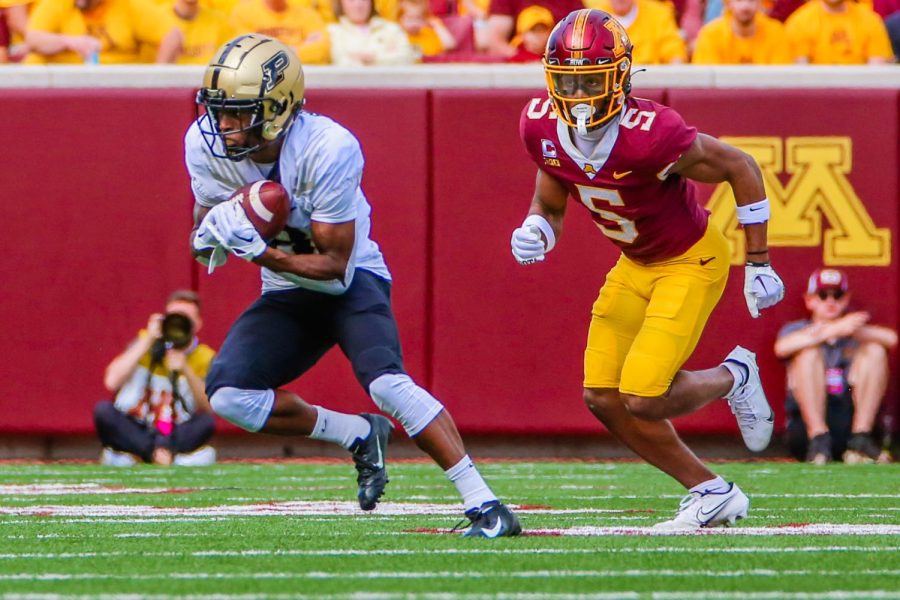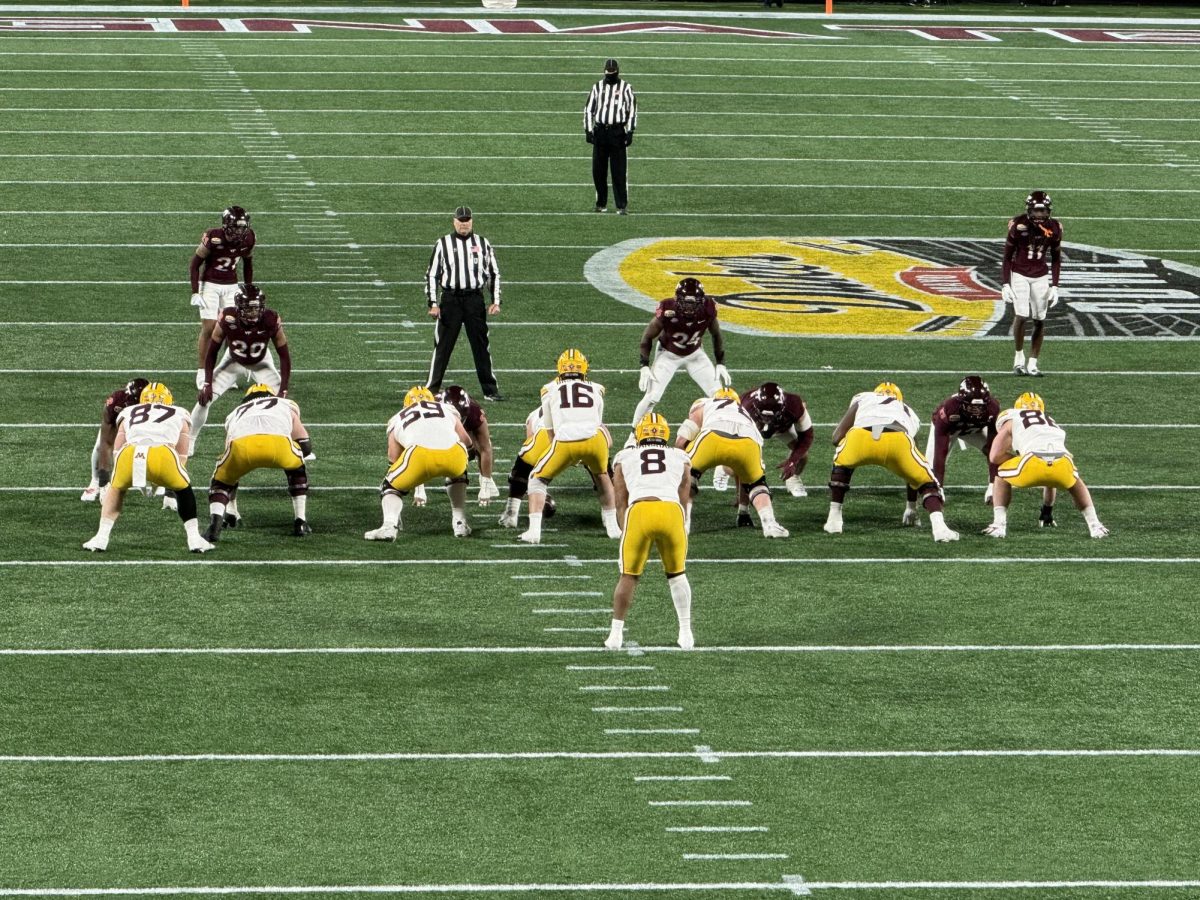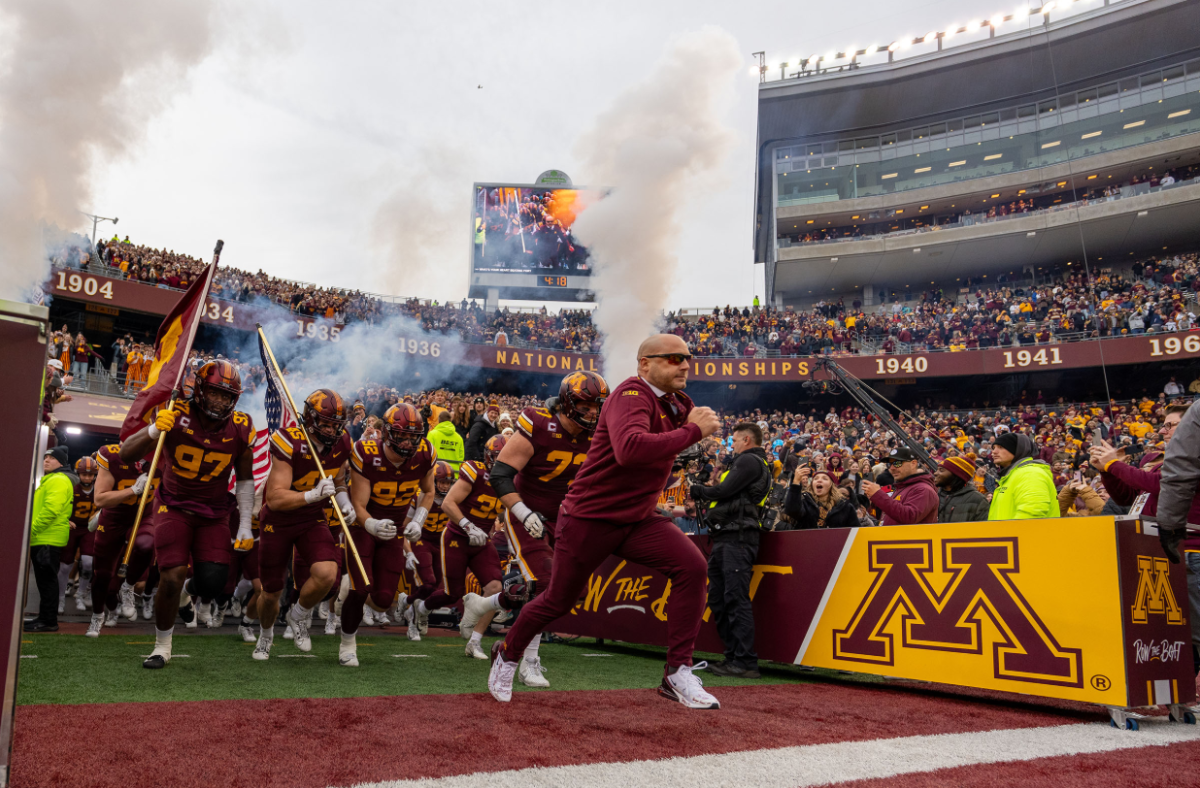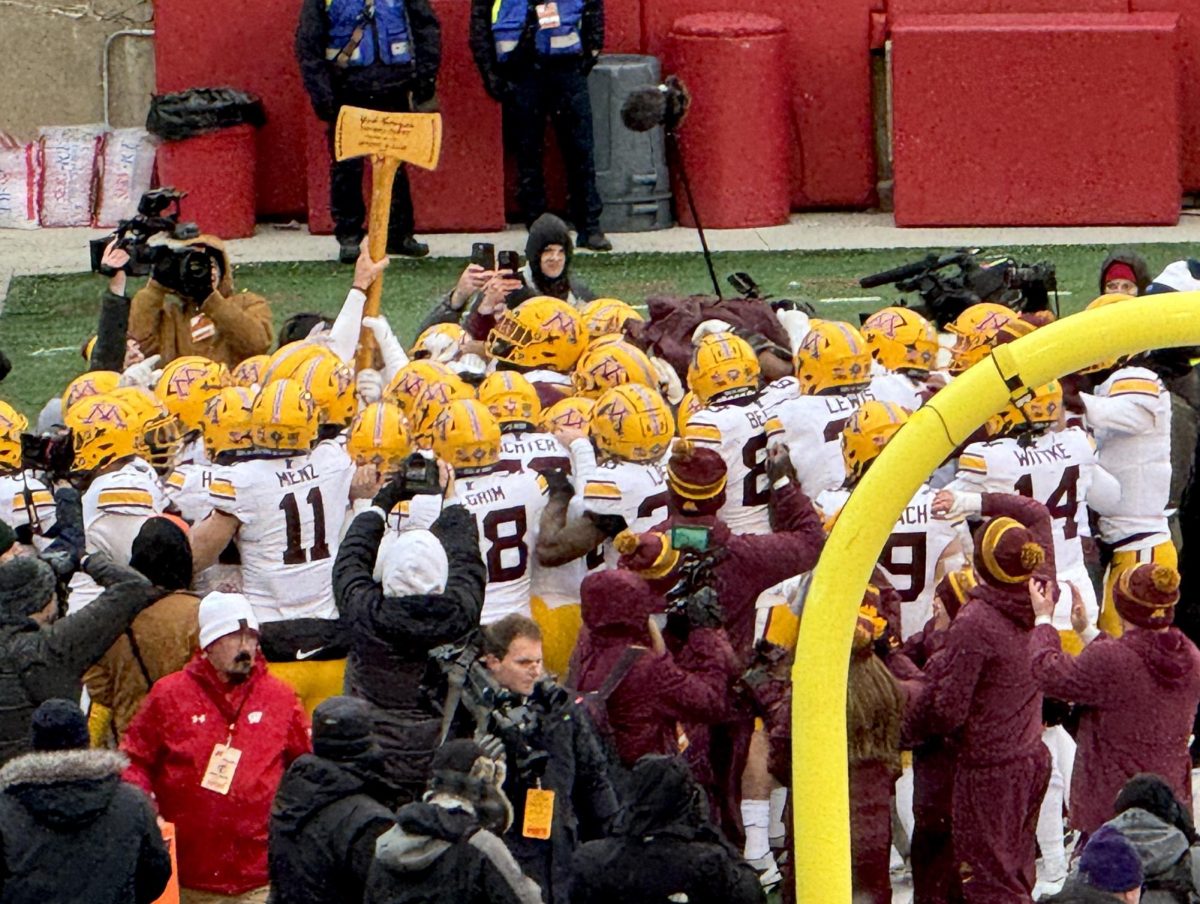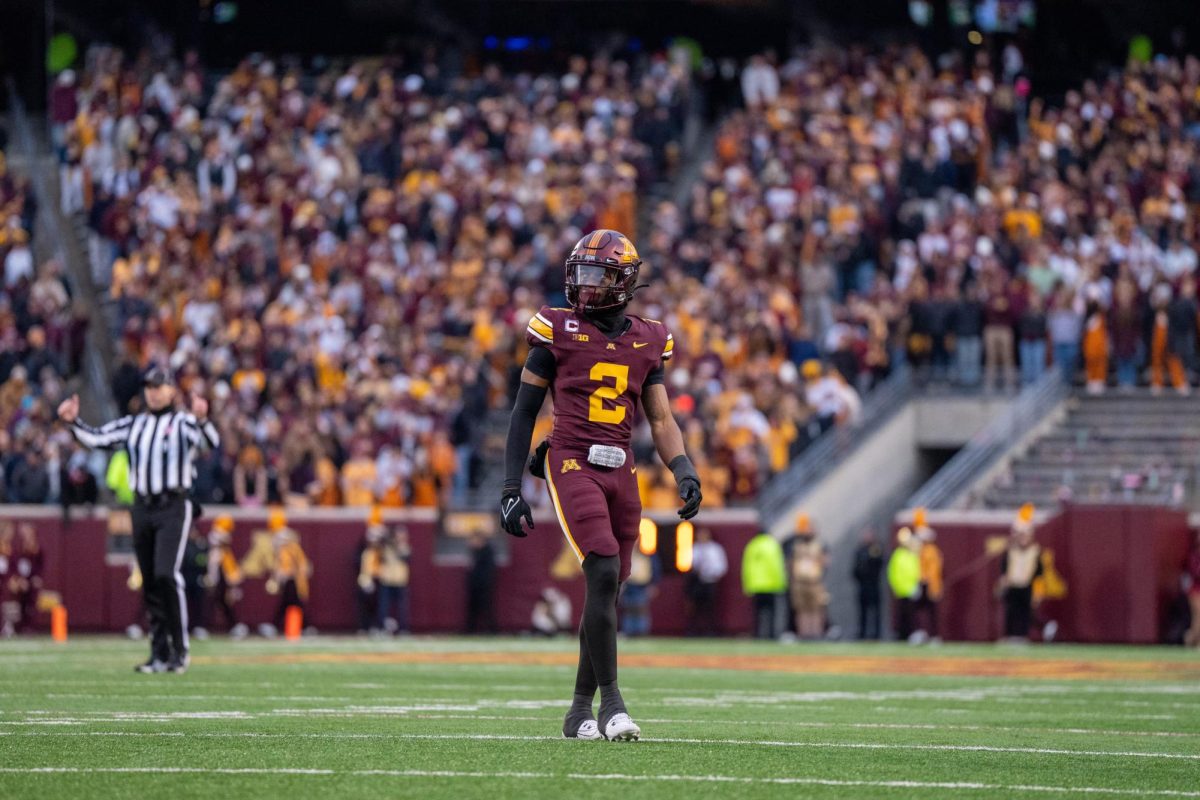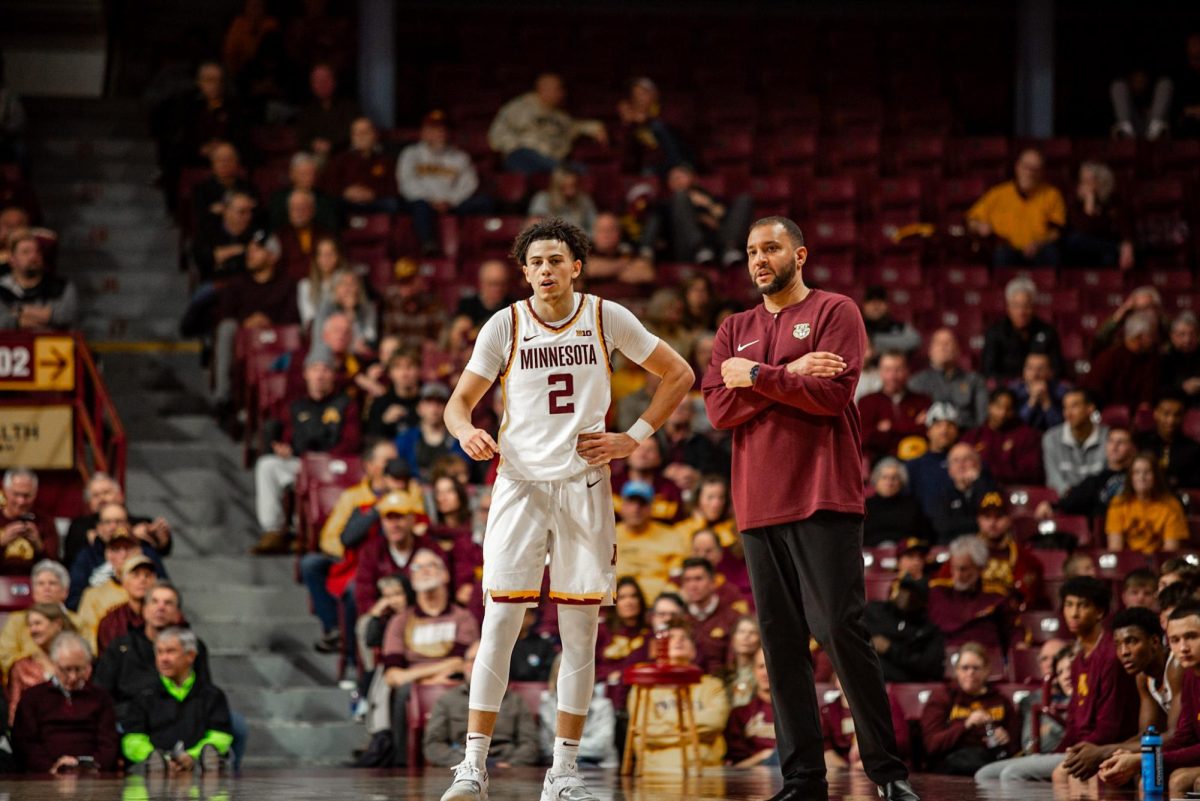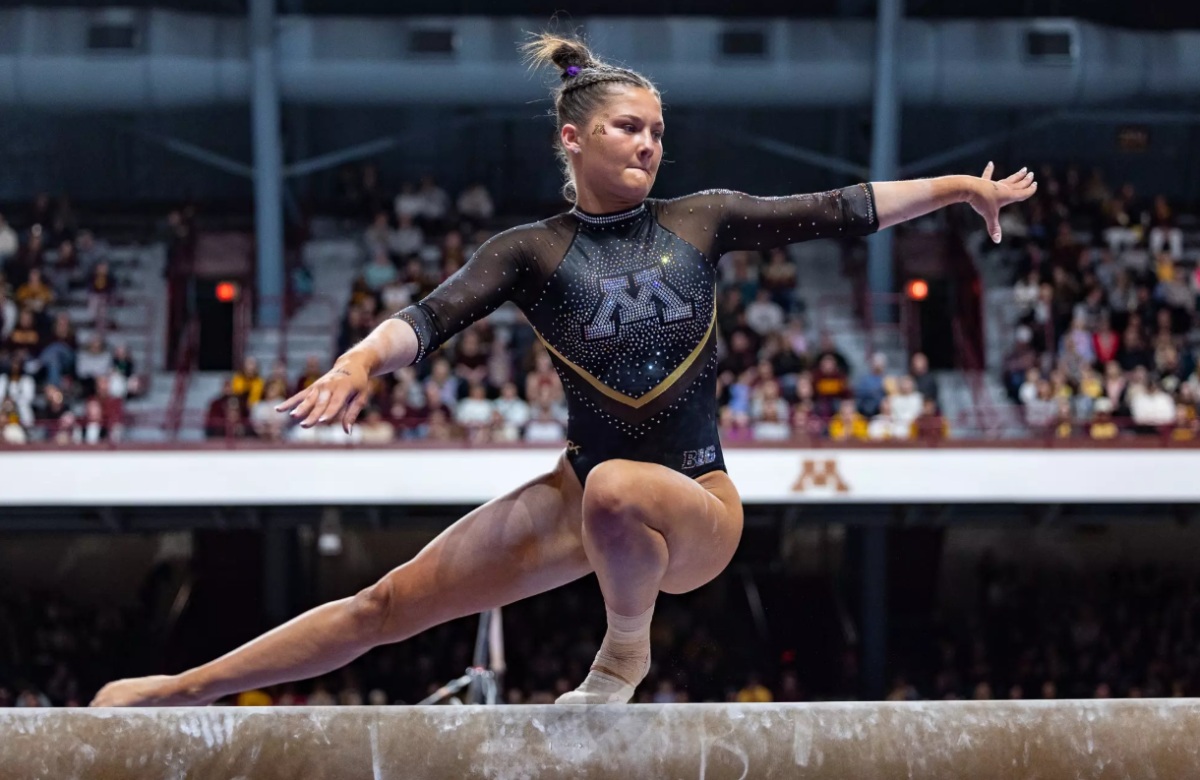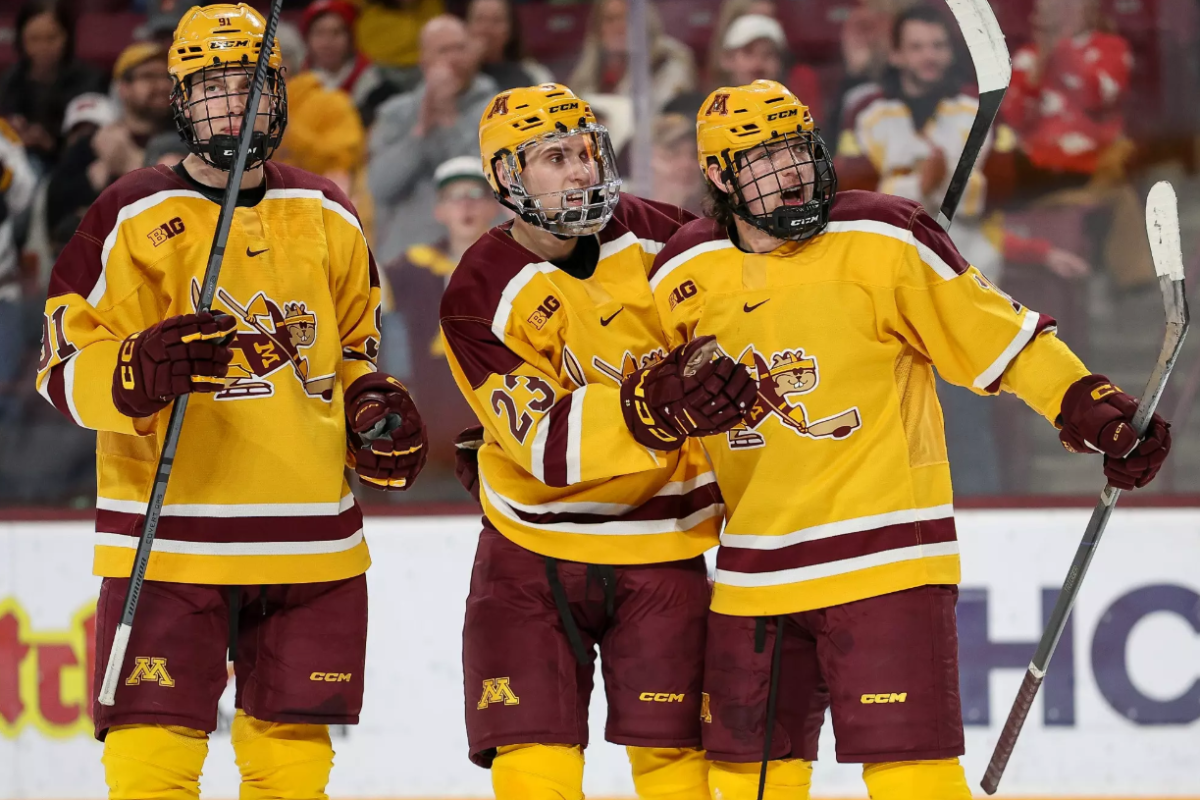Minnesota did not play like the nation’s 21st-best team in their loss to Purdue; the offense failed to execute on 3rd downs, while the defense missed routine tackles. Their abundant mistakes resulted in a low-scoring affair that clouded the positive takeaways, one being the defensive back play.
“They were really aggressive,” head coach P.J. Fleck said in a press conference after the game. “I thought they anticipated [passes] really well and caught the ball really well when it was thrown to us.”
On Saturday, Oct. 1, Purdue’s pass-heavy offense, led by quarterback Aidan O’Connell, went toe-to-toe with Minnesota’s stingy pass defense. The Boilermakers averaged 36 points per game, and roughly 46% of those points came from the air.
Minnesota’s cornerback and safety groups threw a wrench in those numbers.
O’Connell did not throw for any of Purdue’s 20 points. Additionally, he posted a season-low in passing yards (199) and a season-high in interceptions (2). Safeties Jordan Howden and Tyler Nubin were responsible for one interception each.
“They kept us in the game on the back end,” Fleck said. “We were able to get to Aidan a few times too which made him uncomfortable in the pocket.”
The two safeties capitalized on his vulnerability by eliminating the effectiveness of his deep ball almost entirely. On throws 10+ yards down the field, he completed six of his 16 attempts and had an NFL passer rating of 17.45.
On top of their suffocating coverage downfield, they each tallied four tackles and were not accountable for any of the defense’s ten missed tackles.
After the game, Howden commented on the team’s tackling, saying it “was definitely an issue in the beginning, but it did pick up after [the opening drive].”
The cornerback group had a different experience with Purdue. Starting CBs Justin Walley and Terell Smith were tested extensively by the fires of Purdue head coach Jeff Brohm’s shallow passing scheme.
A majority of Brohm’s route designs revolved around, or under, the first down line. The strategy is to wear down the defense by methodically driving down the field with quick throws. Walley and Smith’s main coverage assignment was the biggest benefactor of his scheme: wide receiver Charlie Jones.
Jones led the FBS in touchdowns and receptions and was third in receiving yards. He also averaged 3.58 yards per route run (y/rr), a statistic used to quantify a receiver’s efficiency based on given opportunities. Against Minnesota, he saw ten targets on his 37 routes.
The two corners nearly split even in snaps guarding Jones, but Smith’s performance stood out. He limited Jones to three receptions for 18 yards, helping diminish the impact of an often-utilized wideout.
By the end of the game, Jones finished with season lows in touchdowns (0), receptions (6), yards (55) and y/rr (1.49). These numbers testify to how overwhelming Minnesota’s cornerbacks can be even when facing the most pass-happy teams.
The starting defensive backs are an underrated facet of Minnesota’s defense. Their ability to curtail the production of quarterbacks and receivers is among the best in the nation.
Saturday’s game showcased flaws from many different position groups. But if the loss provided any positive takeaways, one would be learning that the defensive backs can consistently alter the result of an offensive game plan.


